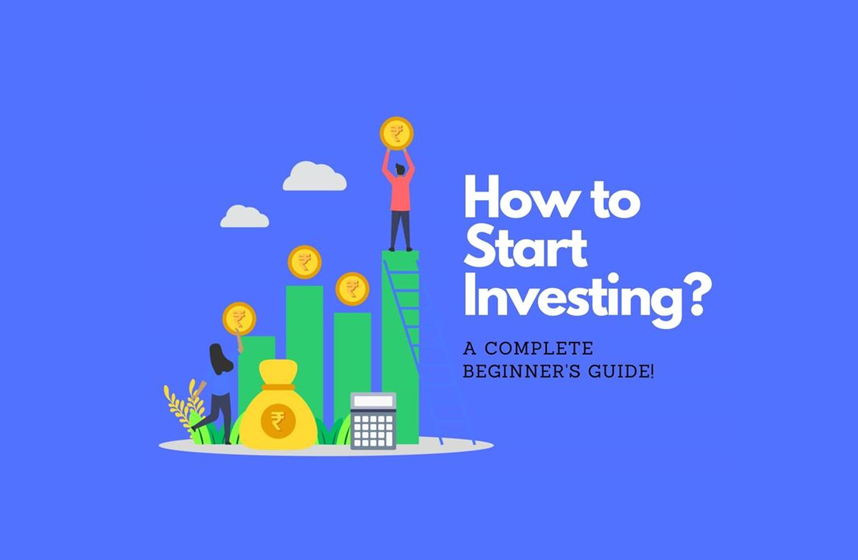How to Start Investing in 2025: A Beginner’s Guide to Smart Wealth Creation
Investing smartly in 2025 isn’t just about growing wealth—it’s about making informed, goal-aligned financial decisions. Whether you’re aiming for retirement, a child’s education, or wealth preservation, this guide breaks down how to start investing in 2025 with clarity and confidence.
With more awareness around personal finance and an evolving economy, now is the perfect time to explore the best investment options available. This comprehensive guide has been designed to help you create a sustainable and diversified portfolio with strategies that align with your financial goals.
What Is an Investment Plan?
An investment plan is a strategic framework that outlines how you intend to allocate your money across various asset classes to achieve short, medium, or long-term goals. It helps in:
- Clarifying financial objectives
- Assessing risk tolerance
- Choosing suitable instruments
- Maintaining discipline in investing
Investment planning involves constant review and rebalancing to ensure you remain aligned with changing goals, market conditions, and risk profiles.
Investment Categories by Risk Profile
🔹 Low-Risk Investments
- Public Provident Fund (PPF)
- Senior Citizens Savings Scheme (SCSS)
- Fixed Deposits
- Sukanya Samriddhi Yojana
- Government Bonds
These are ideal for conservative investors seeking safety and guaranteed returns.
🔸 Medium-Risk Investments
- Corporate Bonds
- National Pension System (NPS)
- Hybrid Mutual Funds
- Post Office Schemes
These strike a balance between stability and moderate returns.
🔺 High-Risk Investments
- Equity Shares
- Equity Mutual Funds
- Unit Linked Insurance Plans (ULIPs)
Best suited for investors with high risk appetite seeking capital appreciation over the long run.
Long-Term Investment Plans for 2025
Long-term investments (7-10+ years) allow compounding to work its magic. Here are the best options:
1. Direct Equity (Stocks)
- Ideal for investors who can research and tolerate market volatility
- Returns: Market-linked; high growth potential
- Tax: LTCG tax after ₹1L @ 10%
- Requirements: Demat & trading account
Explore blue-chip stocks and market leaders. Check the latest Nifty 50 Companies List with Sector-wise Weightage to pick reliable investments.
2. Equity Mutual Funds
- Managed by professionals, diversified across sectors
- SIP starts from ₹100
- ELSS funds offer 80C tax benefit (up to ₹1.5L)
- Suitable for both beginners and seasoned investors
3. National Pension System (NPS)
- Great for retirement planning
- Tier I offers tax benefits under 80CCD(1), 80CCD(1B), and 80CCD(2)
- Flexible equity-debt allocation
4. ULIPs
- Combines insurance and market investment
- Lock-in: 5 years
- Tax benefits under 80C
5. PPF
- 15-year maturity with EEE tax benefits
- Interest: ~7.1% p.a. (compounded)
- Government-backed
6. Real Estate / REITs
- Long-term wealth preservation + rental income
- REITs are more liquid and require lower capital
Medium-Term Investment Options
For goals 3-5 years away, these options balance growth and security:
1. Debt Mutual Funds
- Corporate Bond Funds, PSU Funds, Short Duration Funds
- Tax-efficient vs traditional FDs
- Better inflation-adjusted returns
2. National Savings Certificate (NSC)
- Tenure: 5 years
- Tax benefit under 80C
- Interest compounded annually but paid at maturity
3. Post Office Time Deposits
- Tenure: 1-5 years
- Guaranteed returns between 6.9% – 7.5%
- Eligible under 80C (5-year term only)
4. Hybrid Mutual Funds
- Combines equity & debt
- Ideal for moderate risk-takers
- Better than pure debt funds in a rising market
Short-Term Investment Vehicles
Short-term goals (1-3 years) need liquidity and low risk.
1. Bank Fixed Deposits
- Widely trusted
- Tenure: 7 days to 10 years
- Interest: ~6.5% – 7.5%
2. Short-Term Debt Funds
- Liquid Funds, Money Market Funds
- Better returns than savings accounts
- No lock-in, tax as per slab
3. ET Money Earn (P2P Lending)
- Regulated P2P platform
- Returns up to 9.5% p.a.
- Tenure: 3 to 36 months
- Minimum investment: ₹25,000
How to Choose the Best Investment Option in 2025
- Identify your goals (e.g., retirement, child’s education)
- Define your investment horizon (short/medium/long-term)
- Assess your risk tolerance
- Choose investments aligned to your needs
- Diversify across assets
- Monitor and rebalance periodically
Key Factors to Know Before Starting Your Investment Journey
- Risk Tolerance: Conservative or Aggressive?
- Returns Expectation: Fixed or Market-linked?
- Liquidity Needs: Can you hold your investment till maturity?
- Tax Efficiency: Consider tax deductions and capital gains
- Associated Costs: Management fees, exit loads, commissions
Documents Required for Investment in 2025
| Instrument | Documents Needed |
|---|---|
| Stocks | PAN, Aadhaar, Demat Account, Income Proof (if applicable) |
| Mutual Funds | PAN, Aadhaar, Bank Account |
| PPF/NPS | KYC Documents, PAN, Photographs |
| ULIPs | PAN, Aadhaar, Bank Details |
| FDs | PAN, Aadhaar, Bank Account |
| P2P Lending | PAN, Address Proof, Bank Statement |
Ensure your KYC is up to date before investing.
Conclusion
Starting your investment journey in 2025 doesn’t need to be overwhelming. By setting clear goals, understanding your risk profile, and choosing the right investment mix, you can build long-term financial stability. Regular review, discipline, and diversification are keys to sustainable success. Whether you prefer safe instruments like PPF or want to explore equity mutual funds for higher returns, aligning your strategy with your goals will help you stay ahead in the game.
FAQs
- Can I start investing with just ₹100?
Yes, SIPs in mutual funds start as low as ₹100/month. - Is it safe to invest in mutual funds?
Mutual funds are regulated and diversified but carry market risks. Choose based on risk profile. - Which investment gives the highest return?
Historically, equities have delivered the highest long-term returns. - Is PPF better than FD?
PPF offers tax-free returns and long-term compounding; FDs are better for liquidity. - What is a safe investment option for retirees?
SCSS, PPF, and annuity-based NPS plans are ideal. - How to save tax while investing?
Use 80C instruments like ELSS, PPF, NSC, NPS. - Can I withdraw money from mutual funds anytime?
Yes, except ELSS (3-year lock-in). Others are open-ended. - Are Sovereign Gold Bonds better than physical gold?
Yes, they offer 2.5% interest + gold price appreciation + no storage hassle. - Do I need a Demat account to invest?
Only for stocks, ETFs, SGBs. Not required for mutual funds, PPF, NPS. - How often should I review my portfolio?
At least once every 6-12 months or when financial goals change.
Disclaimer
The information provided on ChartMyWealth.com is for educational purposes only and does not constitute financial advice. Please consult a certified financial advisor before making any investment decisions. Investments are subject to market risk. Past performance does not guarantee future returns.



